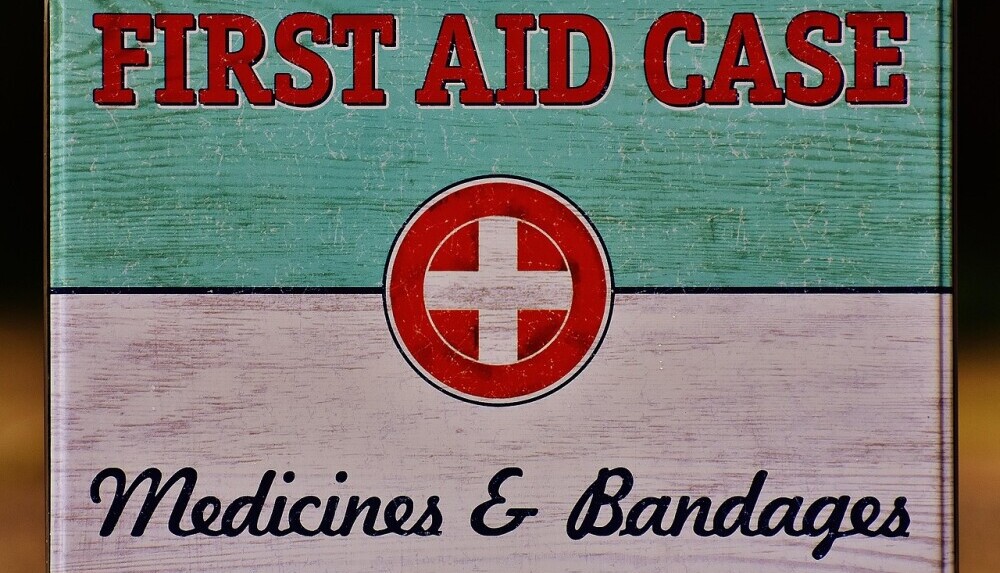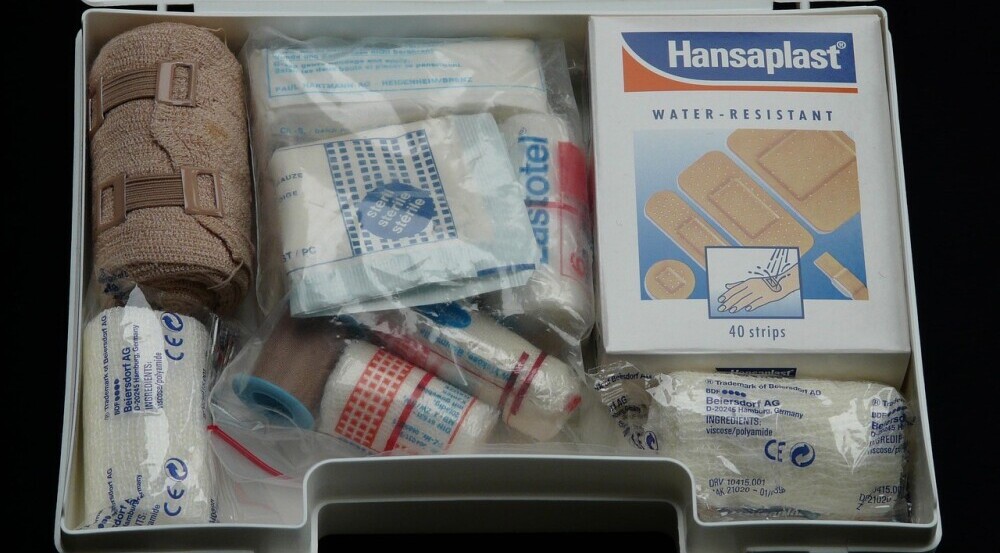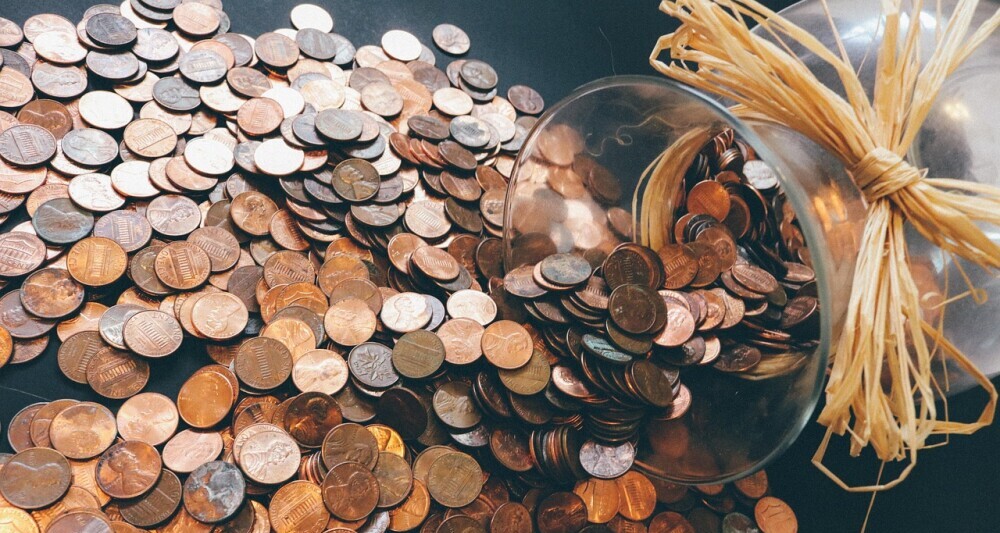 Would you rather listen to this article? Press play below:
Would you rather listen to this article? Press play below:
When I was somewhere between eight and ten years old, I was at my oldest sister’s house swimming in her pool. It was one of those above ground pools with a wooden deck built around it. I did what any other kid would do. I jumped in, swam around a bit, climbed out, and repeated the process. While I was playing, I had climbed out of the pool to run to the other side of the deck when my foot scraped a nail that was barely sticking up past the surface of the wood, resulting in a two inch cut across the bottom of my foot.
All I remember is that it hurt and it bled like crazy. The good news was I didn’t have to go to the emergency room. My parents were able to address the situation quickly by grabbing a first aid kit, applying pressure to stop the bleeding, then cleaning and bandaging the wound. Unfortunately, this meant no more swimming for a few days.
Think about it. How many of us keep first aid kits in our homes to address life’s bumps and scrapes quickly? Why is it that so many people don’t have an equivalent for their finances? What if you had a financial first aid kit to help you address more of life’s minor financial emergencies? Your first step toward financial freedom is a $1,000 emergency fund. It is designed to function like a financial first aid kit for life’s bumps and scrapes as you work your way out of debt and build the life you want.
Just like a first aid kit is designed to treat minor medical emergencies, emergency savings of $1,000 helps handle smaller financial emergencies so you can avoid borrowing money and maintain momentum on building a life you love.
Common “Financial Scrapes and Bruises”
Believe me, I understand. You might be at a point where emergencies don’t feel like scrapes and bruises. You might be saying to yourself, “Jesse, every emergency is a crisis! I never seem to have enough to cover these things!” I get it. I was there too. The good news is it doesn’t have to be this way. We’ll get to that in a minute. First, let’s talk about the kinds of financial scrapes and bruises a financial first aid kit can cover.
These days it may seem like $1,000 just doesn’t go as far as it used to, but it can still provide coverage for a number of surprises. If you are driving down the highway and you blow a tire, your financial first aid kit addresses that and gets you back on the road. You can usually address plumbing leaks, electrical problems, roof patches, and appliance repairs for less than $1,000. Unexpected medical bills can be covered as well (Many insured Reddit users report paying $300-$600 out-of-pocket for an ER visit).
Without a financial first aid kit to address these problems, they can derail finances as soon as they happen. The buffer that a $1,000 financial first aid kit provides means that you can stop the bleeding before it becomes a hemorrhage. The financial first aid kit allows you to move from reactive to proactive in your handling of finances..
The Danger of Ignoring the Small Stuff
When small stuff is addressed quickly, you prevent it from becoming a bigger problem that might cost significantly more in the long run. When the running water in your toilet goes unaddressed, more water is wasted, and it will have an impact on your water bill each month. I knew someone who had a water leak outside that led to $200 per month on their water bill. That can eat up $1,000 fast if not addressed.
When you don’t have $1,000 to address what begins as a small, unexpected cost, it can lead to relying on credit cards and other high-interest loans to cover the expense. For example, you had a plumbing leak so you called a plumber to come out and repair it. The bill came to $500. You didn’t have the money so you used your credit card to pay the plumber. Your credit card company requires $35 per month as a minimum payment. The interest on that loan is 22.99%. You can only make the minimum payment, but what you don’t realize is that at that rate, you will pay $89.86 in interest and it will take you seventeen months to pay it off! And that’s if that was the only use of that credit card in just under a year and a half!
Now, how many people only use their credit card for emergencies one time in seventeen months? Let’s add Christmas shopping, clothes for your kids, a car repair, some extra groceries, and a series of impulse buys to the list. Your anxiety is rising, isn’t it? The stress and anxiety associated with not being able to handle these situations leads you to feel like you’re treading water with a millstone around your neck and you’re just hoping you can keep the taste of salt water out of your mouth. In a moment, I am going to cover the next steps to getting the millstone off your neck so you can swim to shallower waters.
Essential Components to Your $1,000 First Aid Kit

There are three components you want to consider with your $1,000 first aid kit.
- Accessibility
In an emergency, knowing where your first aid kit is extremely important. The goal is to address the situation quickly so you can stop the bleeding. You don’t want to have to scramble to find things that were not meant to address the problem to use as substitutes. Your financial first aid kit should be in a place you have already designated for that purpose. Some people choose to put it in a savings account. Others have a separate checking account they use to store emergency funds. Others put their money in a secure spot in their home. I knew a guy who kept it in an envelope in the glove box of his car! The key is that you know where it is and what it is for so in an emergency you have quick access to those funds.
- Separation
I don’t know about you, but if I leave all my money in one big bucket, I will never remember what is reserved for what purpose. This lends toward spending money saved for one thing on something else instead. It is wise to separate your financial first aid kit from the rest of your finances so you know it will be there when you need it. Keeping an extra $1,000 in your checking account risks losing money that you will need when an emergency comes up. Choose a place that is separate from the rest of your finances, but still accessible. For this reason, longer term savings options like CDs, stocks, mutual funds, etc., are not ideal because those funds can’t be accessed quickly. Make sure you can separate these funds from your everyday cashflow, but remain accessible in the event of an emergency.
- Replenishment
A first aid kit is of value only if there are supplies in it. If you have a medical emergency and run to your first aid kit only to discover that there are no bandages, no gauze, no alcohol wipes, or any other tools in the box, panic will set in, and we never make good decisions in a panic. So remind yourself every time you use any portion of your financial first aid kit, replenish it. If it costs $500 to repair your car, the next $500 you save goes toward replenishing that portion of your first aid kit. A first aid kit is most effective when it is stocked with the things you need to address those minor emergencies.
Building Your Financial First Aid Kit
Now here is where the rubber meets the road. You might be reading this thinking that the recent financial crises you have faced don’t feel anything like minor scrapes or bruises. I’m about to share with you how we can make them feel that way. I’ve already stated that the goal is to have $1,000 set aside as your financial first aid kit. Now we are going to talk about how to build it.
I believe anyone can save money. It’s just a matter of making a few shifts in your everyday rhythm of life to move it up the priority list. This is both the hardest and easiest step in your financial journey. It is easy because it is quickly attainable. It is hard because it requires you to do something different, and change can be hard.
Sometimes we need to flip the script on the internal narrative we are writing in our heads. Instead of saying, “I don’t have any extra money to save,” begin saying “Where am I going to find $5 to put toward my safety net today? Where can I find $20 to put toward my savings this week?” By doing this, it takes the focus off the problem itself and on the solution to the problem. When you set a goal, your brain automatically goes to work on achieving that goal. This mindset shift empowers you to take immediate action.
If you have $0 in savings right now, then when you finish reading this article, I want you to go on a little treasure hunt around your house. Go through your wallet, your purse, your junk drawer, the center console of your car, the pockets of your jeans in the laundry, and any other place you can think where loose change might be. Collect every cent you find and put it in a jar, a coffee can, an empty Tupperware container, or any other place you can designate as your financial first aid kit. Yeah, $5 in loose change may not sound like much, but you just made a step in the right direction.
Next, I want you to think about the next two days or so and the nonessential purchases you might make. I want you to skip one of them and put the money you would have spent on that in the same place you put the loose change from your house. Then I want you to do it again. Was it a $5-7 coffee? Was it a fast food meal? Did you skip the Door Dash order? Let me know in the comments section below.
Consistency over time leads to huge gains. Before you know it, the millstone around your neck begins to fall to the side and you are swimming to shallower waters. The pace at which this happens is entirely up to you. If you would like a few other ideas on bringing in extra income, you can read about it in my Quick Start Guide to Emergency Savings for some practical tips for giving your income a boost.
Conclusion

A financial first aid kit is essential to every financial plan. It allows you to address life’s financial scrapes and bruises quickly so you can stay on track without derailing your finances. It allows you to stop the bleeding before it becomes a hemorrhage. Remember to make this first aid kit available and separate from the rest of your finances. Replenish it as soon as possible after using it.
If you do not already have this financial first aid kit in place, I encourage you to prioritize building this initial safety net for greater peace of mind. Knowing that I don’t have to borrow money from anybody, especially predatory lenders, to handle financial scrapes and bruises helps me sleep better at night. I know my family is taken care of in that regard. It’s not a complete solution, but it does equip you to handle minor hiccups along the journey. What feels like a big deal today will begin to feel like annoyances.
So go start saving today. Go find that loose change or commit to skipping unnecessary purchases so you can save the difference. If you find yourself stuck, I’m here to help. You can always use the button below to book a free consultation with me. We will discuss your situation and how I can help. If you just have a quick question, leave it in the comments section below and I will be happy to answer it.
